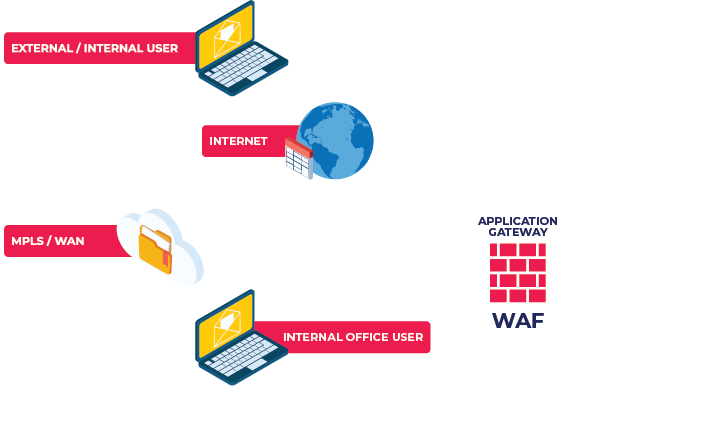TIME CHARTERED VESSELS IN FLEET / SPOT
CHARTER VESSEL LIST WITH TECHNICAL DETAILS
TIME CHARTERED VESSELS IN FLEET / SPOT CHARTER VESSEL LIST WITH TECHNICAL DETAILS
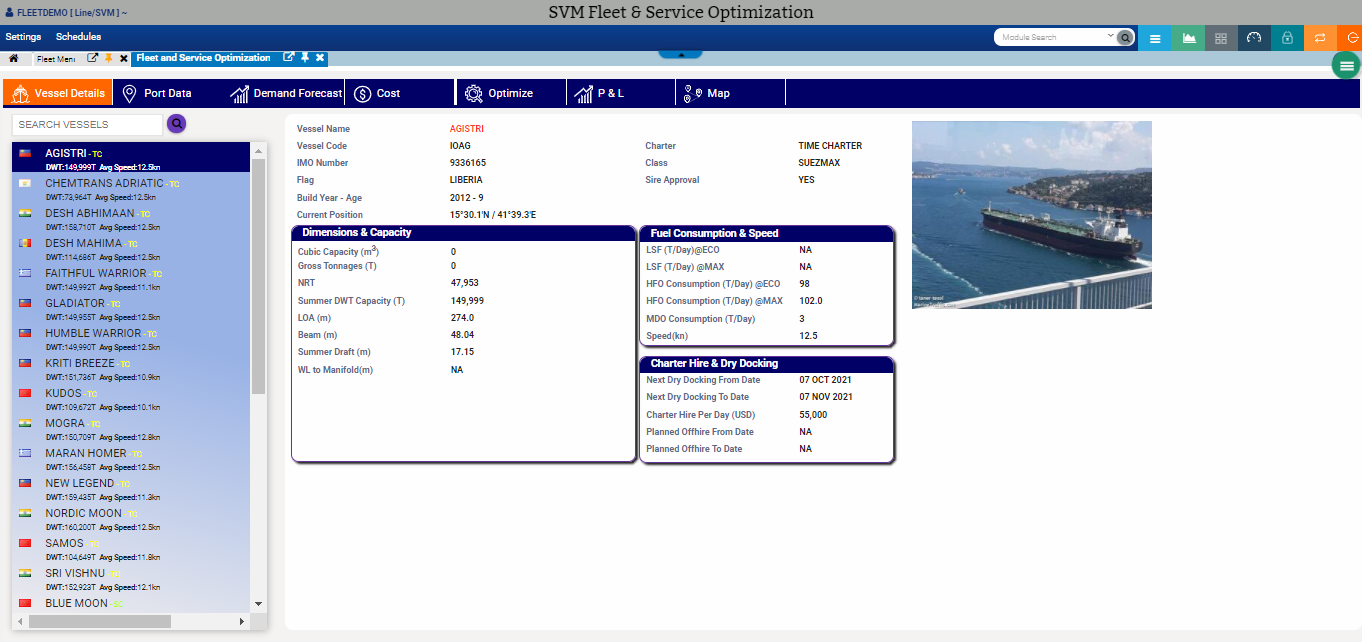
Vessel Details provides the list of vessels in the Time Charter and Spot Charter markets. The vessel details include:
- Vessel name and profile details
- Technical details of the vessel
- Dimension and capacity details
- Speed and the fuel consumption for various fuel grades
- Charter hire rates, periods of hire
and the dry dock dates
LOADING / DISCHARGING PORTS WITH
OPERATIONAL CONSTRAINTS & PARAMETERS
LOADING / DISCHARGING PORTS WITH OPERATIONAL CONSTRAINTS & PARAMETERS
Port Details provides the list of ports where the vessels are likely to call. The port details include:
1. Port name and basic profile
2. Technical parameters such as
- Depth of Port
- High Tide Range
- Allowed LOA, Beam, Parallel Body Length (PBL)
- Allowed Airdraft
- Waterline to Manifold
- Port Congestion Delays
- Manoueuver In and Out Time
- Loading / Discharge Rate
- Port Arrival (during day or during port window)
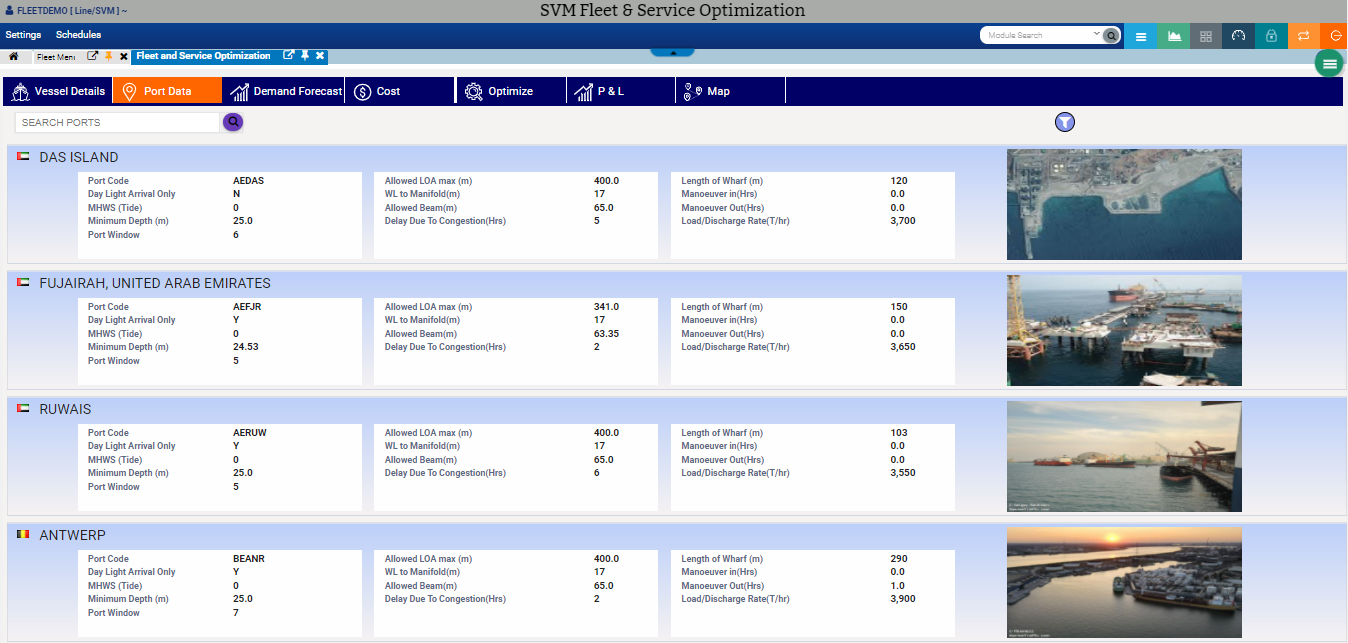
VESSEL COSTS ASSOCIATED FOR THE
PORT-PAIR FOR TIME / SPOT CHARTER VESSELS
VESSEL COSTS ASSOCIATED FOR THE PORT-PAIR FOR TIME / SPOT CHARTER VESSELS
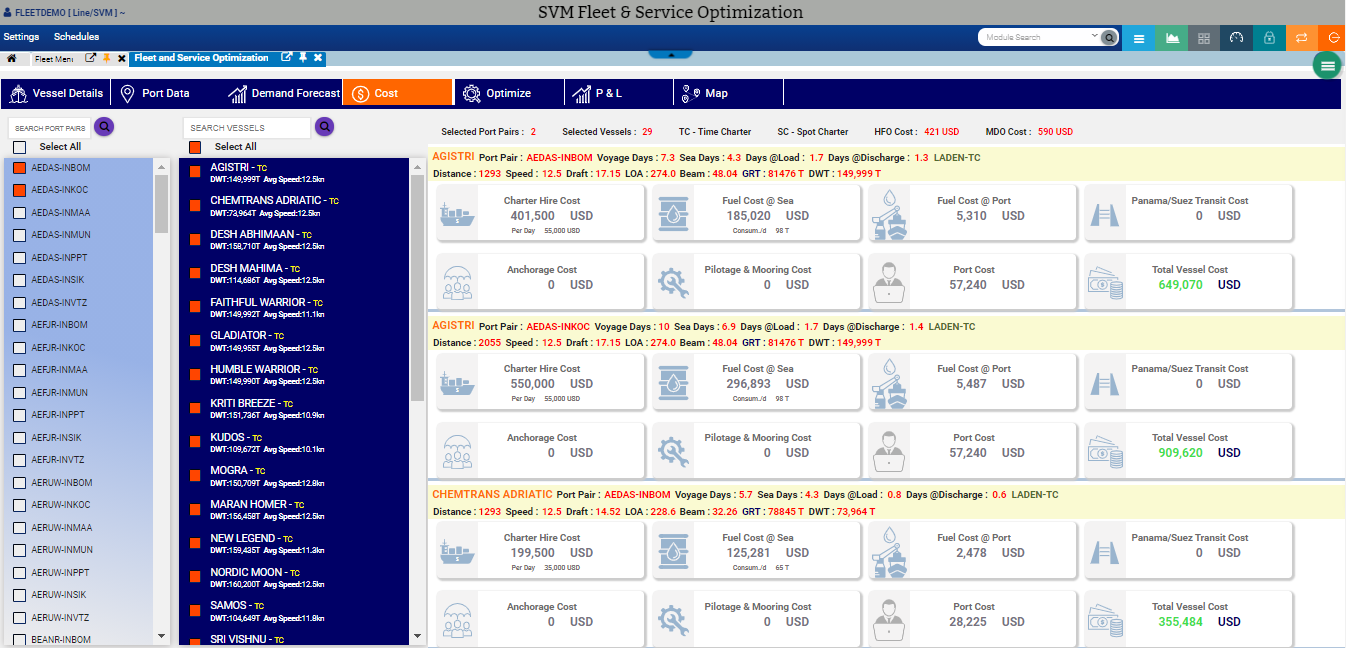
Cost details covers the fixed cost of running the vessels on various different port pair legs, the costs calculated are:
- Charter Hire Cost
- Fuel Cost at Sea
- Fuel Cost at Port
- Panama / Suez Canal Transit Cost
- Anchorage Cost
- Pilotage & Mooring Cost
- Port Cost
- The Fuel Costs are calculated at Daily Bunker Rates as received from Singapore / Rotterdam
OPTIMIZATION RUN FOR A 30 DAY PERIOD
Optimization is where user can select the Load Ports, Discharge Ports, Vessels (both Time Chartered and Spot chartered), the date when the vessels will be available at the Load Port (Nomination and Lay can for Spot Charter vessel). The period for which the optimizer has been run, such as 30,60, 90 days period horizon. The user can also select the different constraints that he wants to apply such as:
- LOA / Beam / Air Draft / Draft Constraints
- Tidal Constraints
- Day Light Arrival
- Port Maintenance Constraints
- Port Congestion
- Draft Adjustment based on Port Depth and Tidal value
- Under Keel Clearance preference
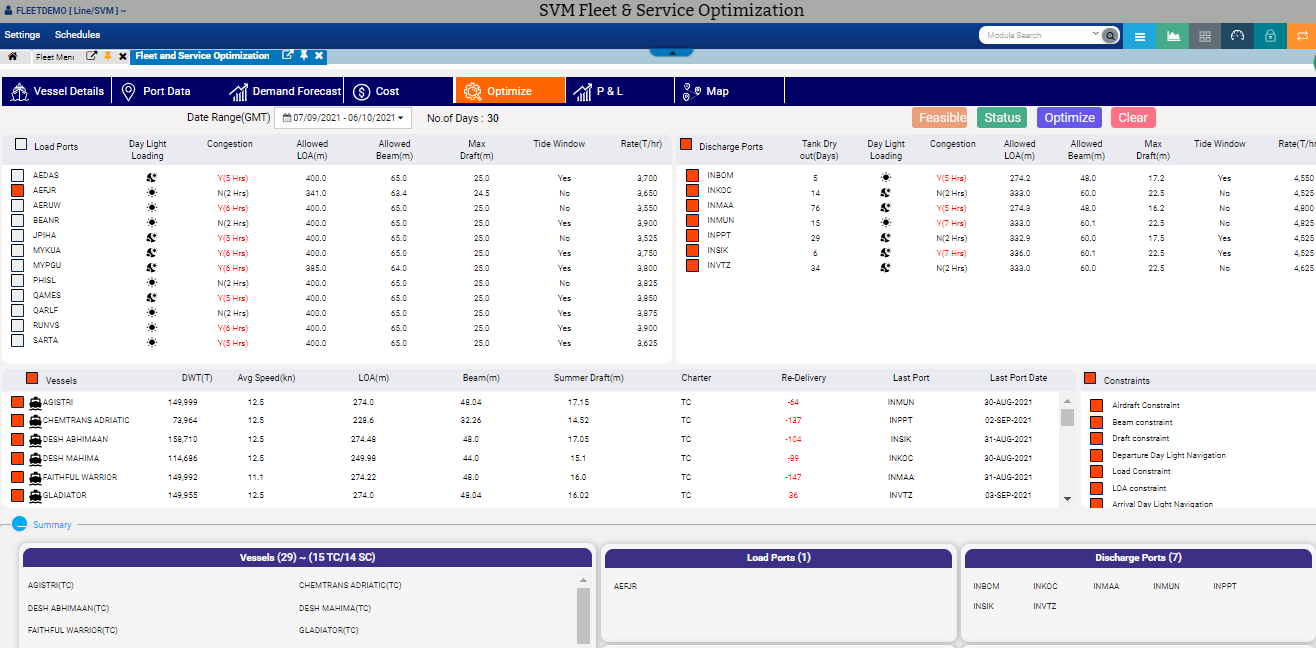
SUCCESSFUL OPTIMIZER WITH
SCHEDULE GENERATION & COST MINIMIZATION
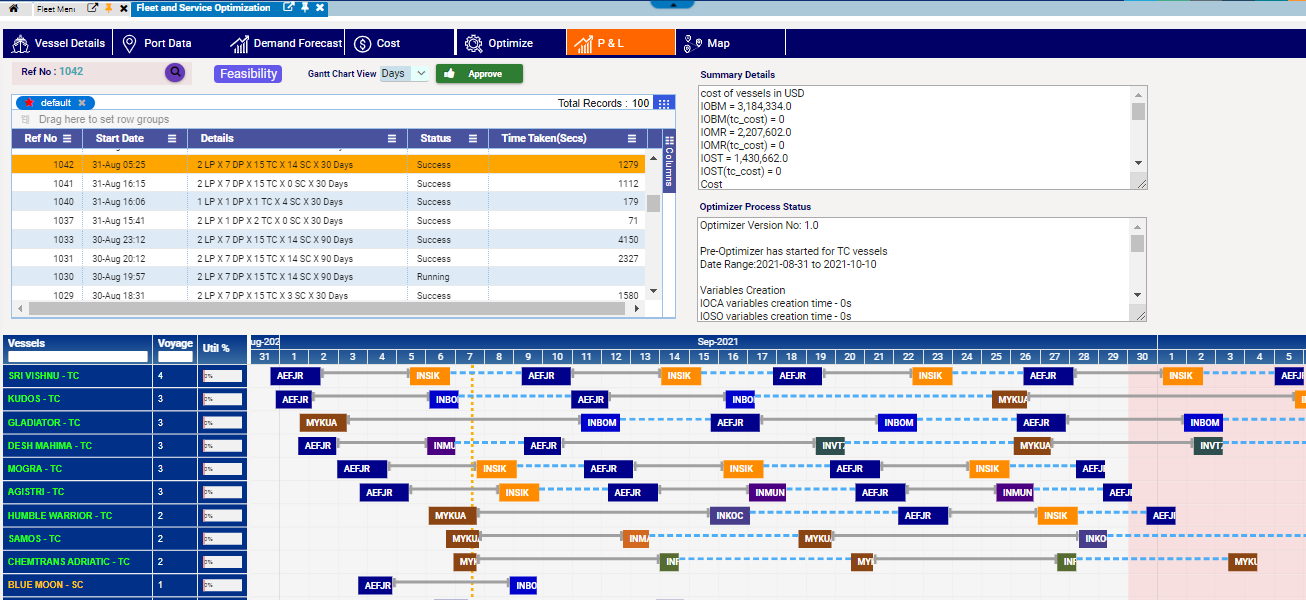
Visualization of the vessel with the automatic generated schedule with the objective function of cost minimization. The display / output shows:
- Schedule of the Time Charter and Spot Charter vessel
- Vessel-wise breakup of the total cost.
- Forecasted consumption at the port of discharge and the cargo replenishment
- Replenishment of the cargo at discharge ports by vessel
- Daily closing balance of the tank, with max capacity & safety stock
- The maximum utilization of Time Chartered ships
- Minimization of demurrage cost for Spot Charter vessel
- Waiting time of the vessel due to multiple vessel arrival time overlap.
- Any seasonality peaks that cannot be satisfied by TC vessels will be covered by Spot Charter vessel.
ANALYSIS OUTPUT
Visualization of the vessel schedule in
a map, with the ability to simulate the
vessel movement on the map.
The system has the ability to plan for
disruption planning, such as port closure
or vessel breakdown or port congestion,
and how the new schedule will be
created with the new revised schedule in
order to minimize the waiting time.

CLOUD DEPLOYMENT ARCHITECTURE - AZURE
